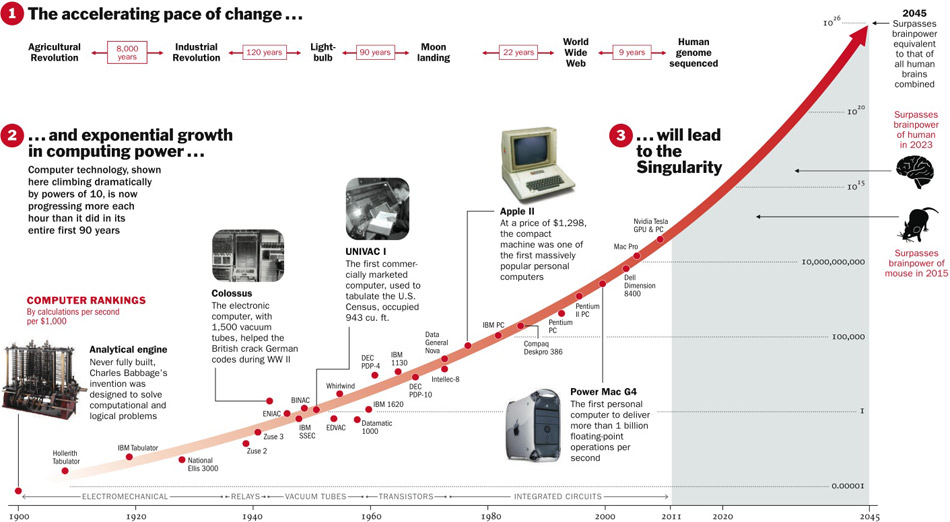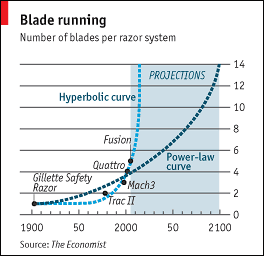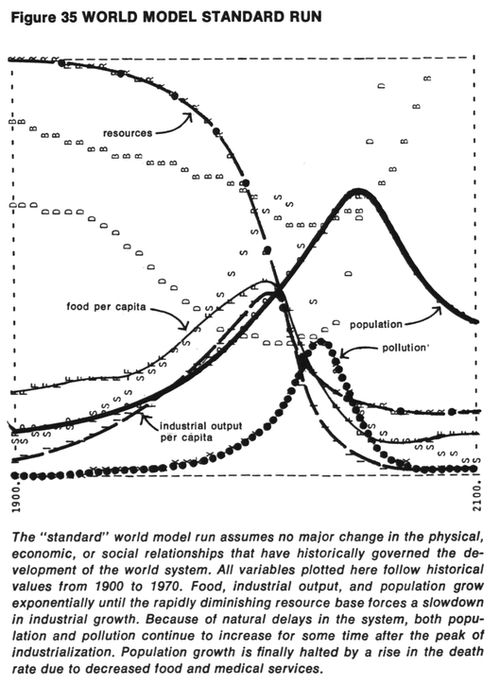The simplest and most common form is linear extrapolation, assuming that a phenomenon will continue to occur at its present rate:

(Source: XKCD)
A slightly more sophisticated approach is logarithmic extrapolation, which assumes a phenomenon will continue changing at its present rate:

(Source: Time, 2011)
Still more sophisticated predictions consider the possibility of various rates of future change of a present phenomenon:

(Source: The Economist, 2006)
The most useful predictions, however, consider not only the current prevailing trends but also relevant countervailing factors, and how these may vary in response to ongoing phenomena:

(Source: Meadows et al., 1972)
I endeavor to holistically consider a full range of physical, ecological and social implications of current trends, as well as the feedbacks, synergies and constraints that they may impose, to understand and describe realistic potential pathways of future events.
[Note to the purist: Here I use the word "prediction" in its most common sense. You may prefer the word "projection", "scenario", "forecast" or "outlook".]
Back
Home